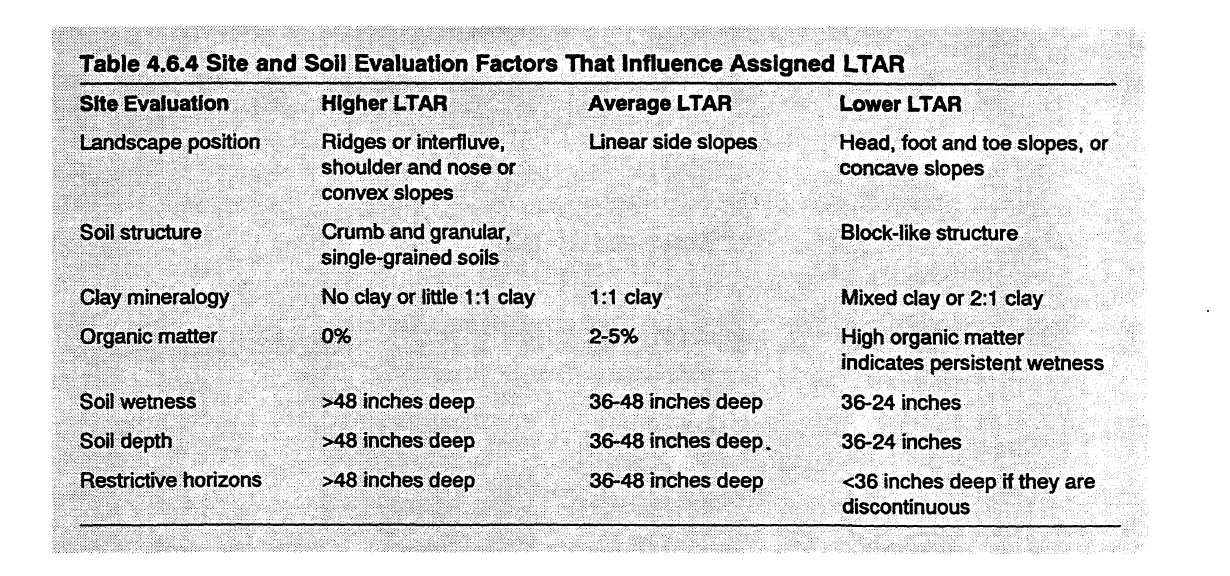Most of the on-site systems have a range of LTARs, depending on the most limiting soil textural grouping. Estimating the LT AR can be difficult because not only must the texture of the most limiting horizon be classified correctly, but "the right rate" must be estimated from a range of rates. Experience with a number of sites and numerous soils will aid in determining a proper value for LTAR. By misclassifying the limiting soil textural horizon or by estimating the wrong LT AR, the entire calculation for treatment and disposal field area can be altered.
The LTAR must be estimated correctly so that the size of the treatment and disposal field is correct.
If the LT AR is overestimated, the size of the treatment and disposal field will be too small, which can invite early failure of the on-site system.
If the LTAR is underestimated, the treatment and disposal field will be too large, thus wasting resources because the on-site system will be underutilized and the construction cost of the site will have been more than necessary.
If available space is limiting system installation, underestimation of the LT AR means that a larger trtment and disposal field will be required. This may erroneously produce an UNSUITABLE classification due to space limitations that would preclude the siting of an on-site system. The site might be able to accommodate an on-site system with a smaller treatment and disposal field.
The range of LT AR values listed in the tables reflects the influence that other site evaluation factors can have on the LT AR. By considering the other site characteristics, higher or lower values of LT AR can be selected to help fit the on-site system to the site.
Soil texture is the major soil characteristic that determines the LT AR for any given soil or saprolite. Estimates of LTAR from the LTAR range for a given soil textural class should then be based on site characteristics such as soil depth, structure, color, consistence, landscape position, and the type of wastewater effluent.
The following factors influence the value assigned to LTAR for small wasteftows.
The Influence Assigned LTAR
An example of using the different soil and landscape characteristics to estimate LTAR is presented in Table 4.6.5 and the explanation following table.
These two soils are very similar. The most limiting horizon for both soils is the B horizon (clay texture). The LTAR range for soils with a clay horizon using a conventional on-site system is 0.4 - 0.1 gpd/ft2
Soil A has the more strongly developed structure in the B and C horizons, better landscape position on the ridge as opposed to on the side slope, and a lack of any mixed mineralogy influence. These factors indicate that Soil A is better suited for more rapid infiltration of wastewater than Soil B and thus should receive a higher LTAR value. Conversely, the weaker structure, mixed mineralogy, and poorer landscape position cause Soil B to receive an LT AR low in the range.
References: Amoozegar, A, M.T. Hoover, H. J. Kleiss, W.R. Guertal, and J.E. Surbrugg. 1993. Evaluation of Saprolite for On-Site Wastewater Disposal. (Water Resources Research Institute, The University of North Carolina. UNC-WRRI-93-279.)
From the North Carolina Onsite Guidance Manual



